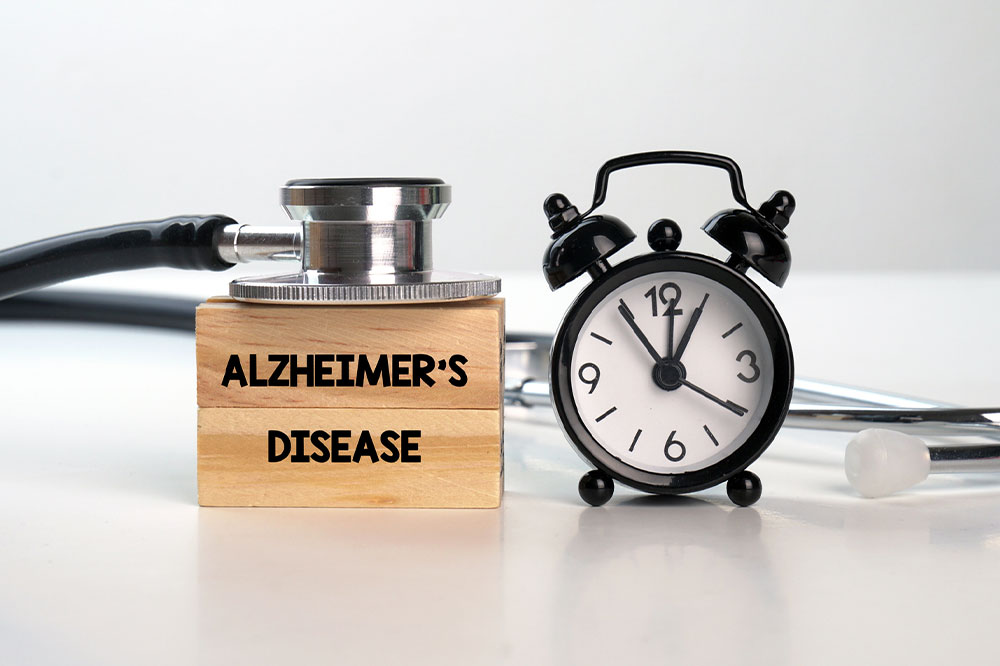Alzheimer’s disease – 7 tips to manage the condition

Around 6.2 million people in the country above 60 suffer from Alzheimer’s. This irreversible and progressive disease of the brain shrinks the blood cells and typically has an effect on a person’s memory and thinking skills. And as the disease advances, the person gradually loses the ability to do the most basic and simple tasks. Knowing the following seven tips can benefit one when it comes to managing Alzheimer’s disease:
Continue with treatment
The FDA has approved several prescriptions for treating Alzheimer’s symptoms and one in June 2021 to treat its underlying biology. There are no approved non-prescription treatments. One must follow the doctor’s guidelines to the T to get the optimum benefit of the available treatments. To explore alternative treatments, one must do it by consulting their doctor. Without a structured treatment, the disease may progress quickly.
Manage comorbidities
Hypertension, coronary heart disease, diabetes, stroke, Parkinson’s disease, COPD, and depression are some of the most common comorbidities of Alzheimer’s disease. It is important to continue the treatment of these illnesses. Worsening symptoms of existing diseases can cause additional pain and distress to patients. For example, fluctuating or poorly managed blood sugars can further weaken their cognitive abilities. Hence, along with treating Alzheimer’s, one must continue treating any preexisting diseases.
Train family members
Alzheimer’s disease has multiple physical, emotional, and psychological impacts. One can anticipate changes in their communication and cognitive abilities, personality and behavior, intimacy, and sexuality. To help them cope with these changes, family members and caregivers must receive training to identify unusual symptoms. As the disease progresses, they may get confused with noises, faces, rooms, floors, signs, and mirrors. They are also trained to notice physical or cognitive changes and are taught when to reach a doctor. Caregivers and family members are taught to:
- Maintain eye contact
- Communicate with the person using the right language and tone
- Promote two-way conversation
- Listen and be patient in case of emotional outbursts
Increase safety around the house
A person with Alzheimer’s disease tends to wander. Keep the main door locked but allow them enough space to move inside the house. Remove objects that can cause injuries like cables, wires, carpets, electrical, and sharp objects. Ensure proper lighting in the places they frequent to prevent the scope of tripping.
Set up a daily routine
A person with advanced Alzheimer’s disease needs the help of others to do even their basic and routine tasks. Right after diagnosis, one of the first things to do is set up a daily routine for regular chores like brushing, bathing, or eating. Once can schedule walks or activities that they enjoy doing. This can help their mood, relieve stress, and reduce the scope of any emotional or angry outbursts. Patients can make time for physical, social, and spiritual activities. A set routine can help them be occupied and reduce quite a bit of frustration they may go through.
Get the right nutrition
Poor appetite, no interest in eating, difficulty swallowing, and agitation during mealtimes are common in Alzheimer’s disease Lack of adequate nutrition can lead to malnutrition, weight loss, and fatigue. They are exposed to a higher risk of infection and delayed recovery in case of viral or bacterial infection. It is important to give them food they like. Serve food that is appealing and smells good. Instead of eating three full meals, one can serve them four or five smaller meals that are nutritious. One must include the following food for managing Alzheimer’s disease:
- Vitamin-rich leafy greens like Swiss chard, spinach, kale, or collard greens
- Flavonoid-rich berries like cherries, blueberries, and blackberries.
- Nuts like peanuts, walnuts, almonds, cashew, and pecans
- Omega-3 fatty food like tuna, mackerel, salmon, flax seed, and olive oil
- Vegetables like broccoli, cauliflower, and Brussels sprouts
- Seeds like pumpkin seeds and sunflower seeds
The following foods need to be avoided:
- Sugary desserts
- Red meat
- Processed food
- Refined grains
- Alcohol
- Saturated oils
- High-calorie food
Engage with an occupational therapist
Occupational therapists can help train and guide patients to improve balance and coordination. This is crucial to prevent injuries from falls and slips as they may begin to face difficulty in moving around the house. They also recommend and teach exercises that can improve endurance and maintain mobility. Occupational therapists can also train family members and caregivers to cope, handle frequent emotional outbursts, and teach them how to communicate with their wards. Care for an Alzheimer’s disease patient can be overwhelming, physically demanding, and emotionally draining. Occupational therapists can also help caregivers and families cope with the continuous care and the resulting physical and emotional stress.
Importance of caring for Alzheimer’s patients
On average, people diagnosed with Alzheimer’s live between three to eleven years from the time of diagnosis. It varies based on the person’s age, current physical health, and existing comorbidities. There are hundreds of groups of researchers and doctors currently working on a cure. Without a cure, the impact of Alzheimer’s disease is irreversible or stoppable. Doctors, therefore, work on managing the disease with the following approaches:
- Slowing the progression of the disease and preventing cognitive decline using prescription therapies.
- Maintaining overall health using nutrition, exercise, regular physical exams, and care.
- Managing behavioral symptoms using non-prescription treatment with the help of social workers, nurses, and support groups.
- Modifying the home environment to make it safe for the patients.
- Educating and supporting family and caregivers to prevent burnout, frustration, or depression.









